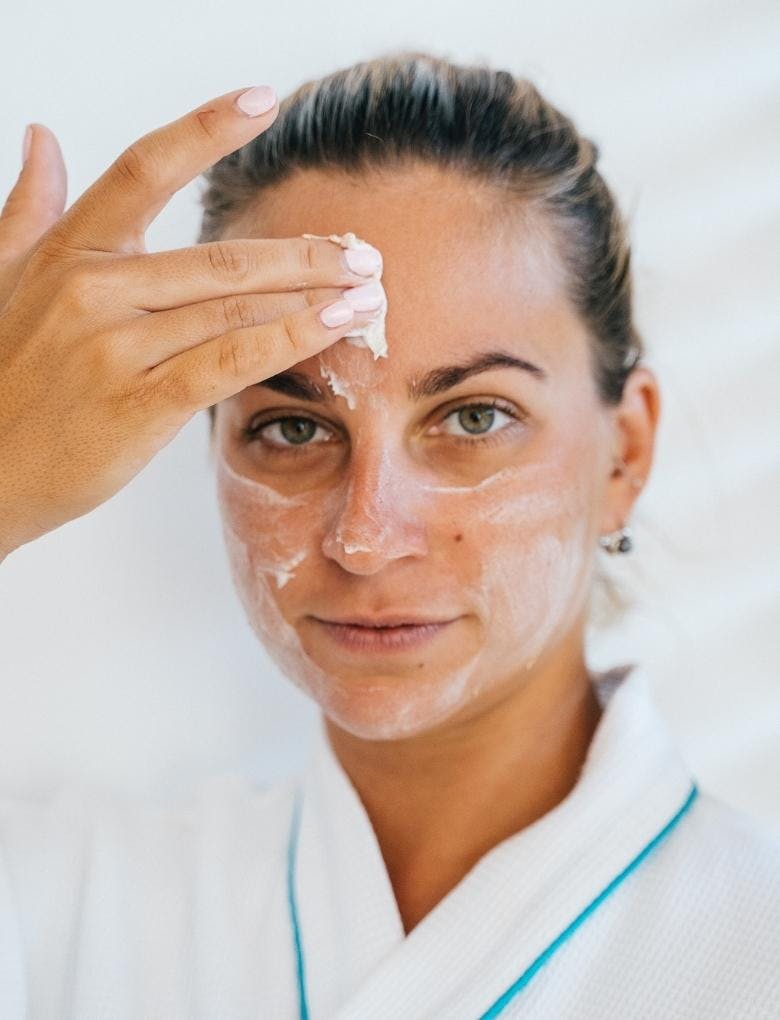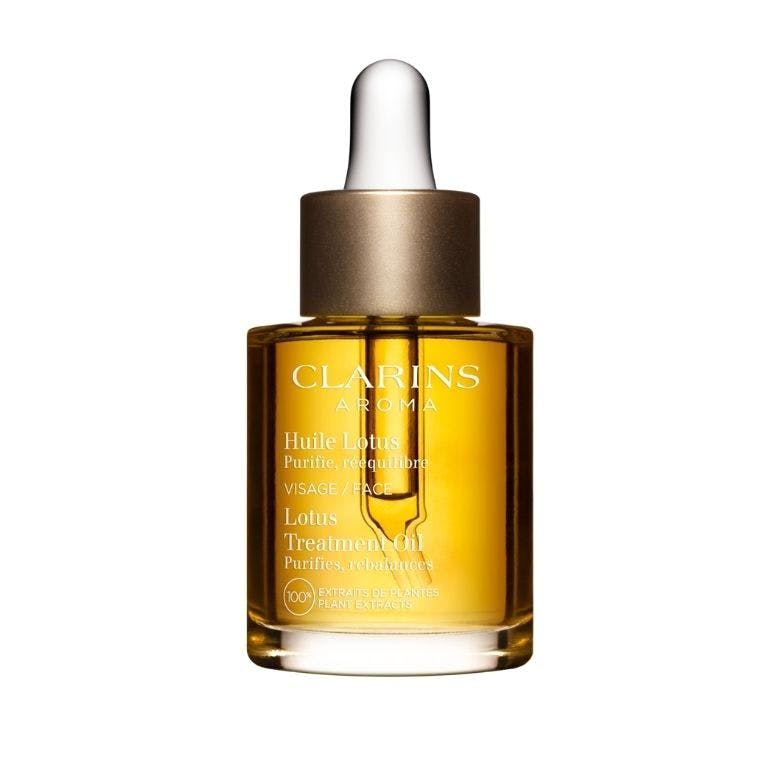What Is Oily Skin And How To Balance It
5 minutes read
Oily skin has its perks and drawbacks. Although you may hate your mid-day shine, the oils make your skin less prone to sensitivity and the last to show signs of ageing compared to other skin types. According to the American Academy of Dermatology, “people with oily skin tend to have thicker skin and fewer wrinkles.”
However, because this skin type produces more sebum than needed, it could cause clogged pores. And a greasy face could also mean smudgy make-up that slips and slides throughout the day.
To balance it, you need to recognise it and tailor your skincare routine to what suits oily skin best. So we asked three experts for their best tips on the subject. Here’s what you should know.

Do you have oily skin?
Unsure about your skin type? Try the wash test: cleanse your skin and pat it dry. Then, without applying any products, observe how it changes over the next 30 minutes. If it starts looking shiny, you have an oily skin type.
Read: How to know your skin type
“With a clinical examination, a dermatologist can identify oily skin as it is quite noticeable in certain areas of the face: the forehead, nasolabial fold and hairline,” says Dr Flávia Pretti Aslanian, consultant and cosmetic dermatologist at Parkside Hospital. “These areas are richer in sebaceous glands, which can be hyperactive and produce a lot of sebum.”
What causes oily skin?
Oily skin is caused when your sebaceous glands are overactive and produce too much oil.
“Oily skin can have a genetic component and tends to run in families,” explains Dr Aslanian. “Hormonal changes can also be a trigger. We also see cases of oily skin related to the use of wrong skincare products, heavy and oily make-up and other products that can clog the pores.”
She adds: “A poor diet can also compromise the skin quality and give it a greasy (appearance), especially when it is more junk food-based, or full of sugary things and does not include fruits and vegetables. Besides that, hot weather and stress can also be contributing factors.”
How do you treat oily skin?
Choose products targeted to your skin type
An easy way to figure out the best products for your skin type is to read the labels; most products indicate what skin they’re best suited for on the packaging.
“Your skincare routine should include a good cleanser and tonic, a moisturiser suitable for oily skin and a sunscreen,” says Dr Aslanian. “It is always a great idea to have a dermatologist advice about the adequate skin products for your skin type.”
She recommends the Perfect Cleansing Kit for Combination to Oily Skin, that includes a cleansing milk, toning lotion, and a gentle scrub.
Don’t skip moisturiser
So many people with oily skin assume that their natural oils provide ample moisturisation. “This is a common misconception I see amongst my oily-skinned patients – they will skip moisturiser,” says board certified dermatologist Dr Mona Mislankar.
A moisturiser’s job is to keep your skin hydrated and prevent water loss, and it could also target other skin concerns you may have like hyperpigmentation or fine lines.
“I recommend finding a light moisturiser, perhaps something with a gel consistency,” says Dr Mislankar. “Creams can also be helpful but avoid thick emollients or ointments.”
Read: The best moisturisers for oily skin
Double cleanse
Dr Mislankar suggests that double cleansing (using a heavier cleanser or make-up remover first, followed by a lighter one to ensure skin is cleansed thoroughly) could be beneficial for oily skin types.
You may also need to cleanse your skin twice a day if it gets too oily by midday. But make sure you’re using something gentle.
Avoid over-exfoliating
People with oily skin can get into the habit of exfoliating more than needed. It’s understandable – a freshly exfoliated face feels smooth and clean, the opposite of the sticky feeling you’re accustomed to.
But it’s not doing your skin any favours. “The problem with excessively exfoliating oily skin is that it encourages oil production,” says Clarins Training Manager Charlotte McHale. “Because your skin reacts to that squeaky clean feeling, assumes there’s not enough oil and produces some more.”
Using a gentle exfoliator once a week should suffice.
Don’t shy away from face oils
Unless you have an acne condition or blemishes exacerbated by oils, there’s no reason to abandon face oils. Instead, they can benefit your skin. “When you apply an oil, your skin recognises that there’s enough oil and stops producing as much,” McHale explains.
Of course, all oils aren’t created equal, and the wrong ones could clog your pores and make matters worse. We recommend the Lotus Face Treatment Oil, designed for oily skin.

McHale shares two ways to use it: “You can either use it as a course: apply it every night instead of a night cream for two weeks. I would recommend that if you’re very oily and want to see quick results. Then, after two weeks, reduce the frequency and incorporate it into your regular skincare routine.”
“The second method is to use it as an overnight mask once a week – apply it on its own on bare skin once a week as a treatment.”
Clay masks can help
Clay masks do a great job at minimising shine. They can also help calm inflammation if you’re dealing with blemishes.
Try: The SOS Pure Mask is loaded with flower extracts and green and white clay that remove any excess oil and dirt and minimise redness instantly.
You could apply it all over as a weekly treatment or just use it where you need it to target blemishes.
But be careful not to overdo clay masks, too – that can have a similar effect to over-exfoliating. If you dry out the surface too much, your overactive sebaceous glands will produce more oil to compensate for it.
The ingredients to look out for
“Look for ingredients such as salicylic acid, benzoyl peroxide, or retinol/retinoids to decrease oil,” Dr Mislankar says.
Salicylic acid is an especially popular one – look for it in your cleanser. It’s a beta-hydroxy acid (BHA), which means it’s oil-soluble rather than water-soluble. So, it can cut through the oil and clean your pores.
Try: The Purifying Gentle Foaming Cleanser has little salicylic acid-filled beads that dissolve as you massage it into the skin. It’s also an SLS-free formula that uses organic saponaria as the natural foaming agent.
Next read: The A to Z guide to using salicylic acid
Sign up for our newsletter
We will keep you in the loop for special offers, exclusive gifts and product news.

